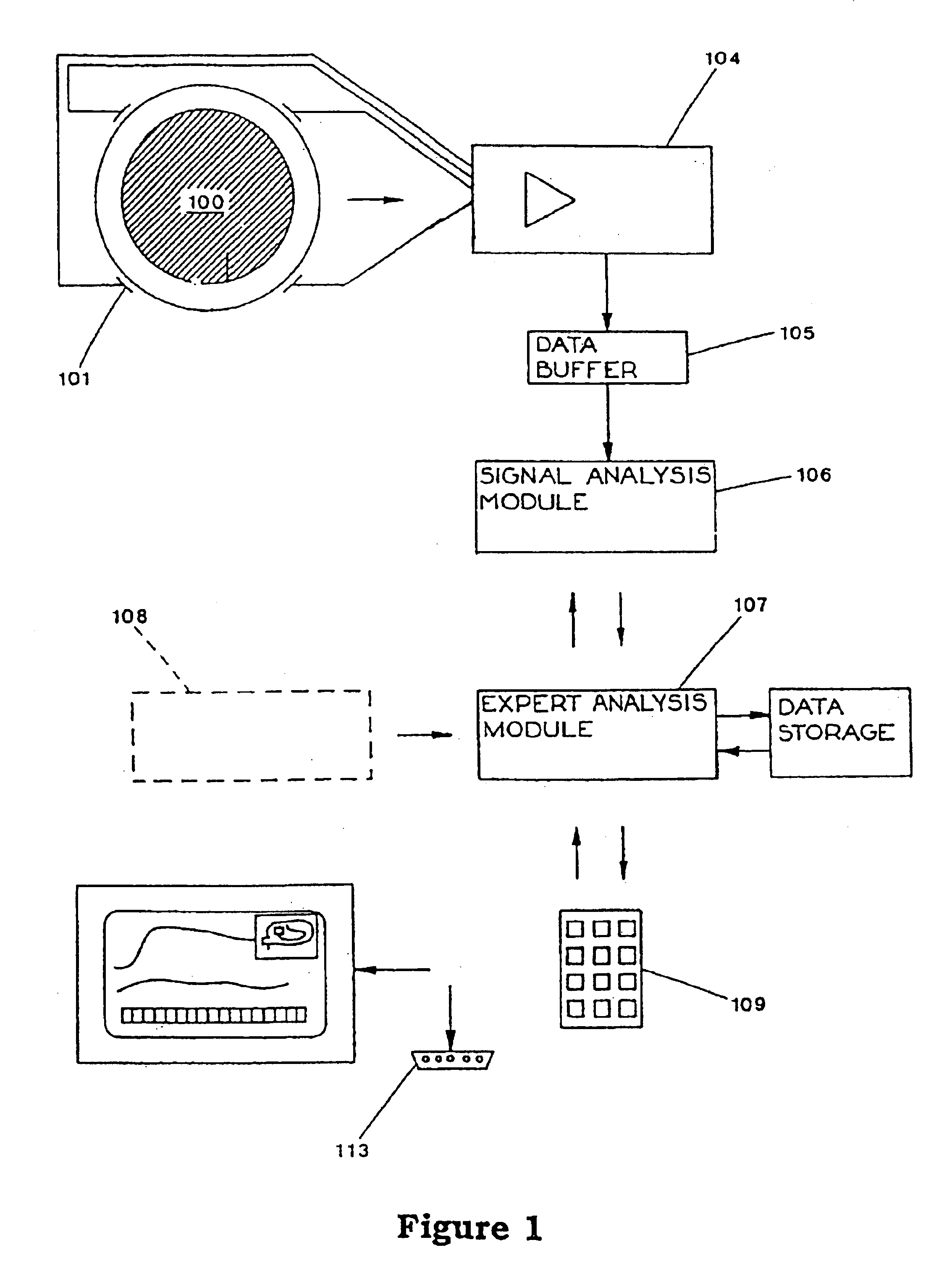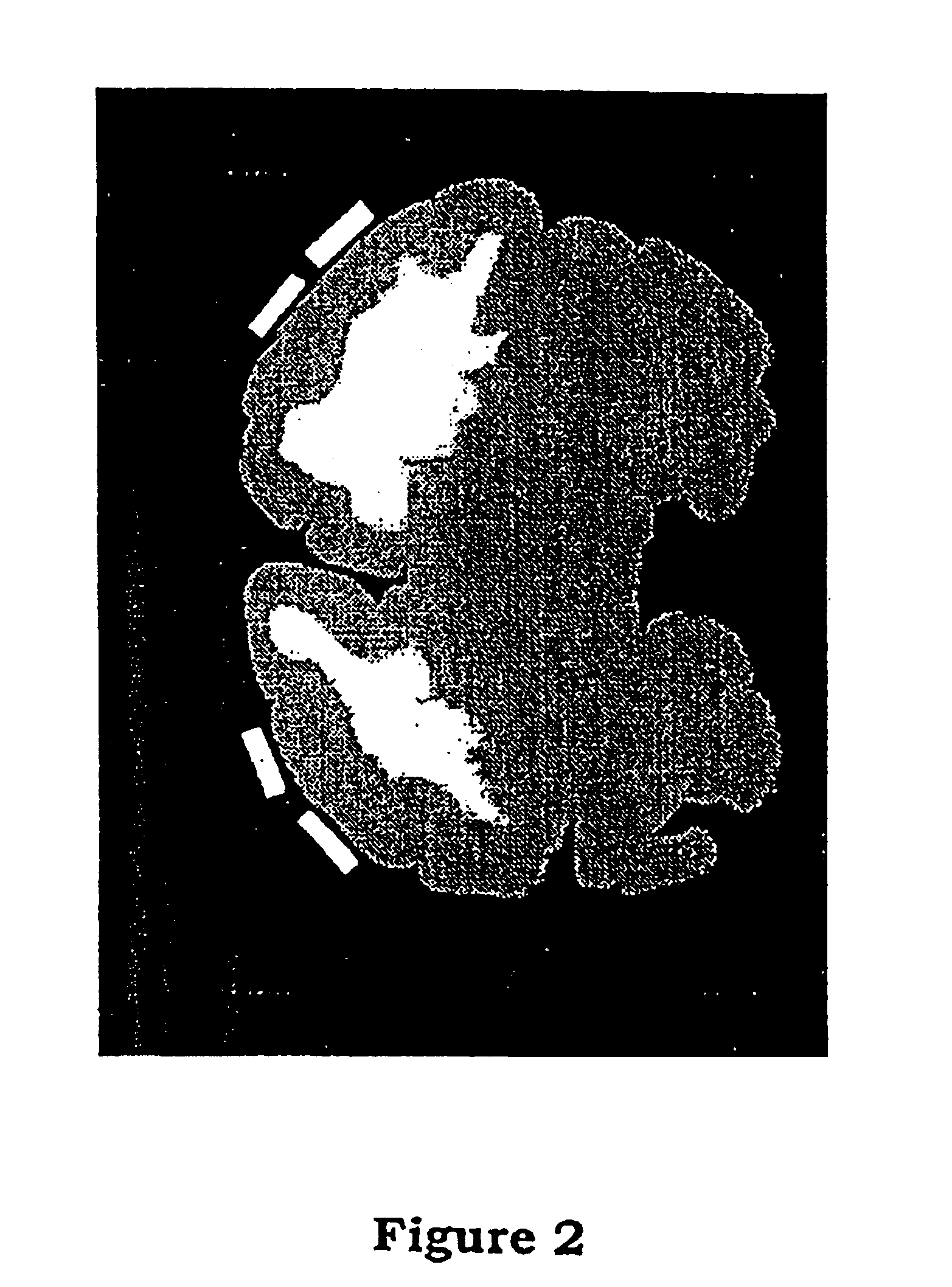Processing EEG signals to predict brain damage
a brain damage and eeg technology, applied in diagnostic recording/measuring, instruments, applications, etc., can solve the problems of periventricular lesions, affecting the long-term neurological outcome, and being significantly less reliable in ultrasound imaging than mri
- Summary
- Abstract
- Description
- Claims
- Application Information
AI Technical Summary
Benefits of technology
Problems solved by technology
Method used
Image
Examples
Embodiment Construction
Definitions
[0044]An “electroencephalogram” or “EEG” comprises an outward indication of electrical activity from the most superficial layers of the cerebral cortex, usually recorded from electrodes on the scalp. This activity is the result of the rhythmic discharging of neurons under the electrode. The EEG signal provides information about the frequency and amplitude of the neuronal electrical activity and its temporal variation.
[0045]The “spectral edge frequency” is the xth percentile frequency of the EEG intensity over the frequency band 2 Hz to 20 Hz, i.e. the frequency below which lies x % of the total EEG intensity. Unless another percentile is specifically referred to, the “spectral edge frequency” is the 90th percentile frequency (more correctly “upper decile cortical spectral edge frequency”), and is the 90th percentile frequency of the EEG intensity over the frequency band 2 Hz to 20 Hz, i.e. the frequency below which lies 90% of the total EEG intensity.
[0046]“EEG intensity”...
PUM
 Login to View More
Login to View More Abstract
Description
Claims
Application Information
 Login to View More
Login to View More - R&D
- Intellectual Property
- Life Sciences
- Materials
- Tech Scout
- Unparalleled Data Quality
- Higher Quality Content
- 60% Fewer Hallucinations
Browse by: Latest US Patents, China's latest patents, Technical Efficacy Thesaurus, Application Domain, Technology Topic, Popular Technical Reports.
© 2025 PatSnap. All rights reserved.Legal|Privacy policy|Modern Slavery Act Transparency Statement|Sitemap|About US| Contact US: help@patsnap.com



